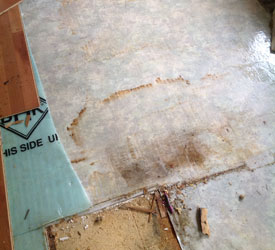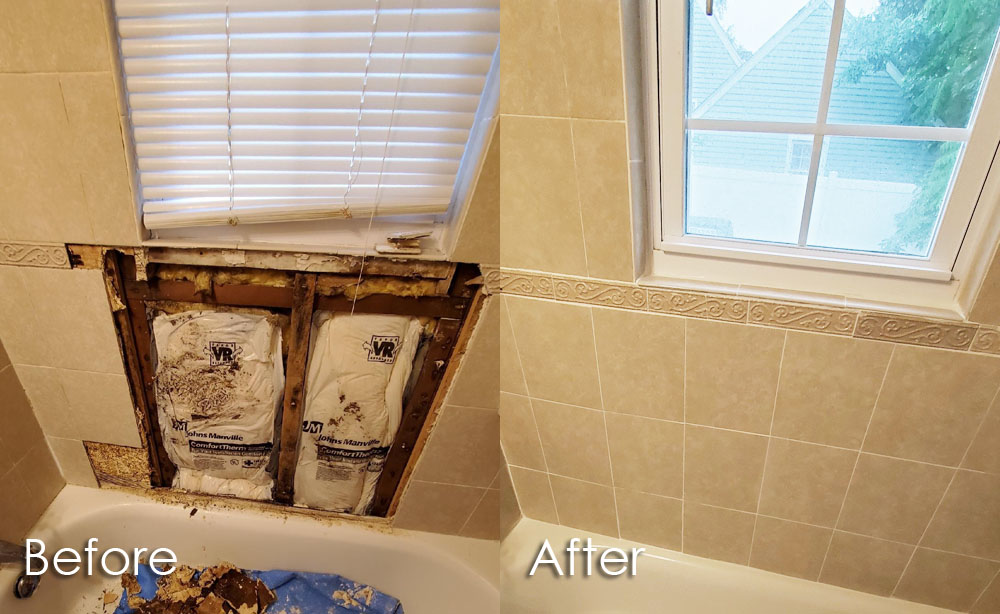How do you feel when it comes to Looking for Signs of Water Damage in the Bathroom?

The shower room is very vulnerable for damp buildup and prospective water damages as a result of the frequent use of water in it. This short article uses straightforward examination techniques to aid spotting water damage dangers.
The constant use water in the bathroom makes it incredibly prone for damp buildup and also potential water damage. By checking it frequently, you can reduce water relevant damages.
The following collection of assessments is simple to perform as well as should be done as soon as in every three months in order to keep your washroom healthy and to stop prospective water damages brought on by the tub, the shower, pipe joints and plumbing, sinks, closets, as well as the toilet
Do not forget carrying out these inspections and be thorough while executing them. Remember that these simple evaluations can save you a lot of cash by supplying early indications for water damages
Bath tub as well as Shower
The shower as well as tub need special interest as well as maintenance. Examine the tiles as well as change if cracked. Ensure that there is no missing grout between the tiles. Evaluate and also change broken caulking at joints where the walls meet the flooring or the bath tub. Blocked drains and pipelines troubles will avoid the bathtub from drying out as well as may indicate serious troubles underneath the bathtub. Consult with a specialist quickly to avoid structural damages. Focus on discolorations or soft areas around the bath tub walls as they may show an interior leak.
Plumbing
Signs for water damages are difficult to spot because the majority of pipes are set up inside the wall surfaces.
Pay special focus to flooring as well as wall surfaces moisture as well as discolorations as they may suggest an undetectable plumbing issue. Examine wetness levels in adjacent rooms too.
Sinks as well as Cabinets
Sinks as well as cabinets are revealed to moisture and also humidity day-to-day as well as are often ignored. Examine consistently under the sink as well as on the countertop over it. Repair any type of drip in the catch as it may recommend drain troubles. Take a look around the sink, slow-moving draining pipes might indicate an obstructed drain. Change sink seals if they are cracked or loosened.
The Toilet
The bathroom is an at risk water junction. Examine the water lines and look for leaks around the bathroom seat, in the tube, and under the water container. If you detect any type of indicators of moisture on the flooring around the commode, check for leakages in the toilet edge and also tank seals.
Understand that hanging commode dish deodorants enhances the possibilities for obstructions.
10 TIPS TO PREVENT WATER DAMAGE IN THE BATHROOM
The average household uses approximately 80-100 gallons of water per person per day. For a family of 4, that's almost 2,500 gallons of water a week! The largest portion of this consumption comes from bathroom use. Flushing the toilet uses the most water, followed by taking a shower or bath. With that much water running through the home, water damage in the bathroom is bound to happen. Knowing how to spot signs of a water leak is essential to preventing long-term damage. This guide provides you with tips to reduce the impact of water damage on your bathroom.
CAUSES OF BATHROOM WATER DAMAGE
Pipe breaks are the most common cause of water damage we see in our daily jobs. The age of a pipe plays a large role in a pipe break as well as corrosion. Over time, the metal begins to break down, allowing water to escape. Frozen pipe breaks are also a concern in the winter months. Toilet overflows caused by paper products or children flushing inappropriate items. Degraded caulking around the toilet or bathtub can allow water seepage, sometimes behind the fixture, into the subfloor or walls. Condensation forms when the water in a pipe is cooler than the air temperature. Beads of water form on the exterior of the pipes, sometimes so much so that the water begins to drip and pool below. Sink or shower backups created by poor drainage. HOW TO PREVENT WATER DAMAGE IN YOUR BATHROOM
Inspect your toilet supply line for worn or frayed hoses and replace them as needed. Winterize your plumbing to prevent a frozen pipe break. Use vent fans to prevent condensation that can lead to mold growth. Routinely check and replace degraded caulking around your toilet or bathtub. Increase the temperature in your toilet tank and insulate your pipes during the warm summer months to keep condensation from forming. Use child safety locks on the toilets. Flush only toilet paper. "Flushable" wet wipes are actually not good for your plumbing system. Additionally, feminine hygiene products should not be flushed. Prevent water from escaping the tub or shower. Make sure shower curtains are in good condition. Inspect shower doors and replace the seal strip if necessary. Wipe up any water that accumulates on the floor and use bath mats. Water left to sit can cause damage to the tiles and flooring. Refrain from using bath products containing heavy oils to avoid a clogged drain.

I stumbled upon that blog entry on Common Causes of Water Damage in a Bathroom when surfing the internet. Appreciated our review? Please share it. Let another person find it. We take joy in reading our article about How to Fix a Water Damage Bathroom.
Request Your Service